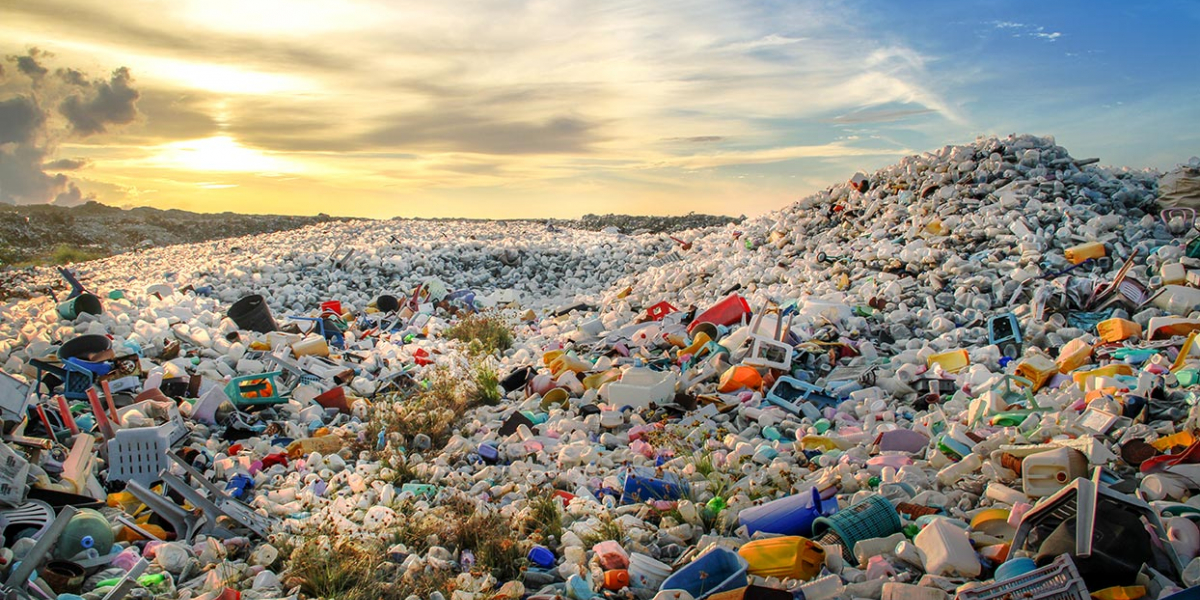
This post is from Smart Prosperity Institute's Circular Economy Guest Blog Series. To learn more about the circular economy in Canada, check out our new Policy Brief. Interested in contributing to this series? Click here to learn more.
February 12, 2018
Guest Post By Jonathan Arnold
The Chinese government’s crackdown on imported recyclables is creating a mess for waste exporting countries like Canada. Historically, China has bought two-thirds of North America’s recyclables. With the change, much of that waste no longer has a market. This is pushing some municipalities to landfill or burn recyclables or pay higher prices to find new markets.
The ban is also forcing countries like Canada to confront uncomfortable truths about where and how we manage our waste. And it’s shedding light on how provinces and municipalities can genuinely improve waste management systems here at home. The short-term pain could be worth it.
Border problems
Starting in 2018, the Chinese government banned the dirtiest and most polluting materials, including plastics, unsorted paper, textiles and mining slag. The move wasn’t a total surprise; nor does it bar all imported recyclables. But it’s sent shockwaves through the multi-billion dollar recycling industry—all the way from China to your blue bin.
The move by China addresses several domestic issues. The biggest is that Chinese importers weren’t always getting what they paid for. Imported waste had high levels of contamination, containing everything from non-recyclable garbage to hazardous waste. That drove down the value of materials and left China with the clean up. In a sense, the ban is also a matter of principle: China no longer wants to be viewed as the world’s waste bin.
A thin line between recyclables and garbage
The impacts on some Canadian municipalities have been swift and costly. Recycled materials are piling up as brokers—including municipalities—scramble to find new markets. Some are now shipping materials to India, Indonesia, and Thailand, however, these markets won’t be big enough to accept the (literal) boatloads of waste.
Other municipalities are taking more drastic measures. Halifax, for example, used to send three-quarters of its recyclables to China. It’s now forced to burn and landfill a portion of its low-grade recyclables, some of which could be shipped halfway across the country. Calgary faces similar problems.
The ban is also cutting into municipal budgets. Municipalities generate revenue from selling recyclables to countries like China that help offset the costs of curb side recycling programs. The growing glut of recyclables, however, is depressing commodity prices. The City of Edmonton, for example, is predicting a revenue shortfall of nearly $1 million this year. The region of Peel in Ontario is experimenting with new technology that will (hopefully) reduce contamination. But these new technologies are costly, too.
A little transparency goes a long way
Seeing recyclables landfilled or burned is enough to make any dutiful recycler cringe. But all is not lost. In fact, the crackdown on recyclables is probably a good thing for Canada…eventually.
For starters, it forces us to confront how we manage our waste. The global recycling industry is enormous and highly competitive where buyers and sellers prize confidentiality. As a result, even seasoned recyclers can only guess where materials in their blue bin end up. The same goes for knowing the full environmental impact of curb side recycling programs.
The import ban provides some much-needed transparency and attention for the recycling industry. The harsh environmental realities in communities that receive our materials are more exposed; so are the problems with contamination in municipal waste streams. The recycling industry is already responding with cleaner bales and more transparency. Further upstream, companies are trying to improve the recyclability of their products.
Smarter policies wanted
At the same time, the import ban informs how policy here at home can improve. Impacts from the ban are uneven across Canada, which is telling. Municipalities in British Columbia, for example, have been more insulated than others. This is, in part, because B.C. forces producers to pay the costs of recycling under its extended producer responsibility (EPR) programs.
EPR programs in B.C. put the onus on industry to manage the entire recycling system and cover 100% of the costs—instead of municipalities and taxpayers. Regardless of whether the market price for plastics is $300 or $10 per tonne, the material must be recycled. EPR can also encourage companies to avoid higher costs by finding more economical ways of producing and packaging their products. They can also help reduce contamination through better collection and sorting.
As they currently stand, EPR programs in Canada are far from perfect. All provinces have adopted EPR programs, however B.C. is the only province that requires producers to manage and fund the entire system. Most EPR programs also only cover the residential sector (B.C. included). Expanding EPR to commercial sectors—which generates two-thirds of Canada’s waste—could be a good start.
Don’t waste a good crisis
The Chinese ban has upended the recycling industry. But the fallout from the ban could be worth the trouble. It’s time that we—the generators of waste—better understood how and where our waste is recycled. Here at home, the tightened Chinese market shows how provincial policies like EPR can help; or, perhaps more importantly, how a lack of policy can hurt.
As the impacts from the import ban continue to evolve, it will force Canadians to confront their relationship with their waste. The Ecofiscal Commission will take a deeper look at the ban and waste management in Canada in the coming months. Stay tuned for more.
Jonathan Arnold is a Research Associate with Canada’s Ecofiscal Commission. This post originally appeared on the Ecofiscal Commission's blog.